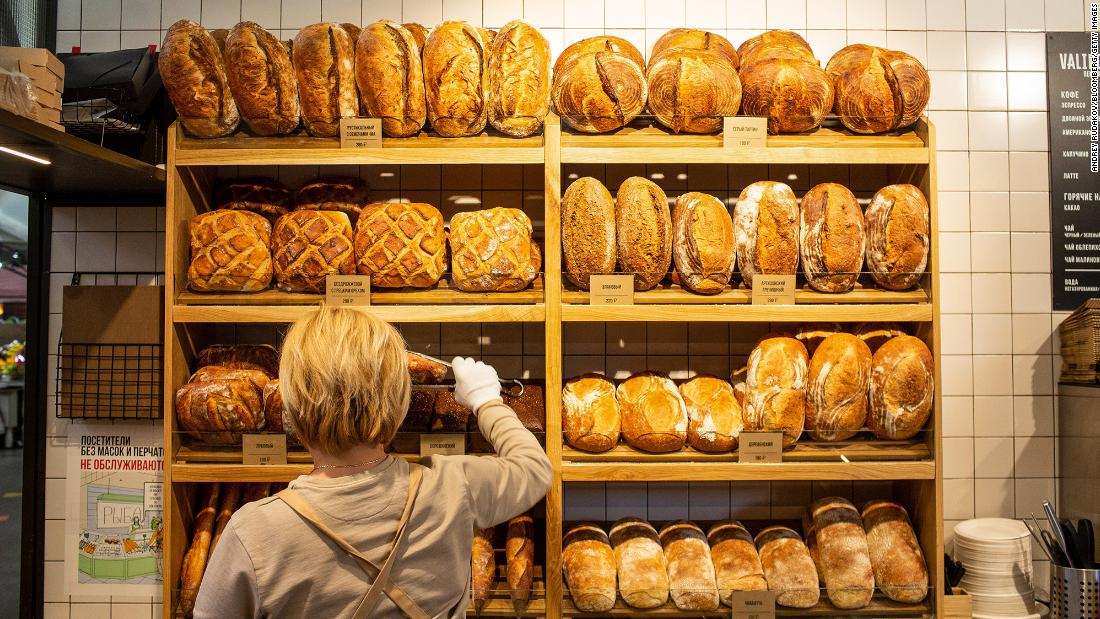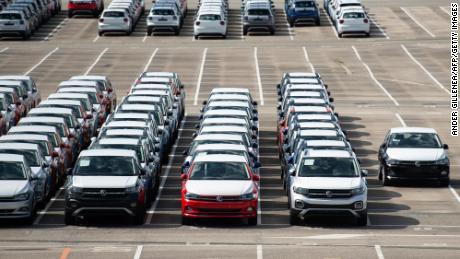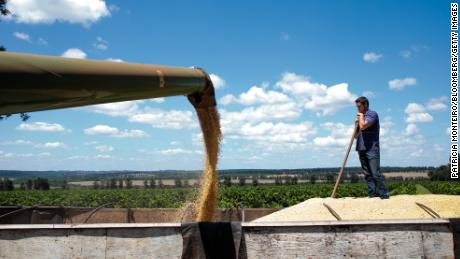But companies that idled factories or put workers on furlough during lockdowns are now unable to secure enough raw materials to build the houses, make the cars or assemble the appliances that are suddenly in high demand.
Companies are furiously trying to restock inventories following last year’s global recession, straining supply chains already reeling from the pandemic to breaking point. A shortage of shipping containers and bottlenecks at ports have made matters worse and increased the cost of moving products around the world. Throw in accidents, cyberattacks, extreme weather and the huge disruption caused by the desperate hunt for cleaner sources of energy, and you have a perfect storm.
There’s no telling how long demand will outpace supply, especially as the pandemic continues to rampage through some of the world’s biggest economies. But there have already been shortages of everything from microchips and chicken to chlorine and cheese, and prices are spiking.
The big question is whether shortages and price hikes are temporary byproducts of the pandemic, or if the global economy is changing in ways that could permanently hike the cost of doing business and usher in a new era of inflation. The answer has huge implications for workers, investors, companies and governments.
What is certain is that, for now at least, inflation is back and it’s widespread.
How did we get here?
Brent has since shot up to over $70 a barrel on a dramatic turnaround in demand. US oil hit $70 a barrel on Sunday for the first time in nearly three years. A similar phenomenon is playing out across a host of commodities, industries and products.
“We’ve never really had anything quite that violent and rapid, both in terms of the change down and the change back up,” said George Calhoun, director of the quantitative finance program at the Stevens Institute of Technology in New Jersey. “It’s clear that [the economic rebound] created a lot of disruptions, not just in supply chains, but in business models.”
Take the auto industry, a prime example of how the events of the past year have upended supply chains, changed consumer behavior and are now fueling price pressures.
The pandemic temporarily shuttered car factories last year, while the recession that followed torpedoed sales. When automakers responded by cutting back vehicle production and thus orders for microchips, semiconductor manufacturers reassigned spare capacity to companies making smartphones, laptops and gaming devices — products in high demand from housebound consumers.
At the same time, stimulus checks and low interest rates have made vehicle purchases more accessible to households, many of which want to avoid public transportation and carpooling during the pandemic.
The price of used cars and trucks in the United States jumped 10% over the previous month in April — the biggest increase since 1953, according to the Bureau of Labor Statistics. Prices were up 21% compared with a year earlier, making used cars the primary driver of April’s surge in US consumer prices.
“More important though, interest rates and consumer preference for vehicle ownership versus ride share and public transportation are supporting demand,” he added. “Americans want individual transportation.”
Commodity prices surge
As the pandemic recovery takes hold, the cost of raw materials needed to produce consumer goods and power vast infrastructure spending in China is soaring. US President Joe Biden’s infrastructure proposal would only increase demand if approved by Congress.
Iron ore, copper and steel, used to make cars, houses and electrical appliances, have hit record price levels in recent weeks. The Bloomberg Commodity Spot Index, which tracks price changes across a range of metals and agricultural commodities, has jumped roughly 60% over the past year.
In Shanghai, the price of rebar, a type of steel used to reinforce concrete, has fallen from record levels in May but is still 16% more expensive than at the end of last year.
In the United States, lumber shortages tied to sawmill shutdowns earlier on in the pandemic have spiked prices, adding nearly $36,000 to the price of an average new home, according to an analysis by the National Association of Home Builders Association.
“It’s really been a perfect storm,” said Warren Patterson, head of commodities strategy at ING.
The latest problem: JBS Meat, a major beef and pork producer, suffered a cyberattack that forced the company to shut down plants in North America and Australia last week. Factories have since come back online but the disruption could cause wholesale meat prices to jump, analysts said.
On the supply side, dry weather in Brazil, Thailand and Europe has weighed on crop yields, while Russia, the world’s leading wheat exporter, has implemented an export tax to bolster domestic supplies and cool prices.
Global food prices rose for a twelfth consecutive month in May and at their fastest monthly rate in more than a decade, according to the UN Food and Agriculture Organization. The FAO Food Price Index, which tracks a wide range of products, was nearly 40% higher last month than its level a year ago.
An increase in supply could ease prices gains, particularly because at these levels there is strong incentive for farmers to plant more crops, Patterson said. In other words, the trend could be temporary.
“The move we’ve seen across most commodities is part of the usual recovery, a cyclical uplift,” he added. “As we see the global economy normalize, once we’ve recovered, demand will ease off and I expect prices to. I’m not of the view that we’re in a commodities super cycle.”
Logistics and labor costs climb
Commodities are not the only factor driving prices higher, however.
Labor shortages, which have also become a problem in Europe, are partly related to the speed at which economies reopened and are likely to normalize once welfare payments dry up, stimulus checks have been spent and workers in sectors such as hospitality and travel feel more confident that businesses won’t be forced to shut again, said Andrew Kenningham, chief Europe economist at Capital Economics.
“That’s the only way to mitigate significant cost inflation,” CEO Marc Bitzer said in an interview with Bloomberg Television last month. “There is talk or hope that this is a temporary blip. We see it elevated for a sustained period,” he added.
Supply chain constraints have forced the company to make products based on the goods it has available rather than on customer orders. “That is anything but efficient or normal but that’s how you have to run it right now,” Bitzer said. “The supply chain is pretty much upside down.”
In Germany, the industrial heart of Europe, supply chain disruptions exacerbated by the Suez Canal blockage offer one possible explanation for an unexpected drop in industrial orders in April, according to Carsten Brzeski, head of research at ING.
The Logistics Managers’ Index, a US economic indicator, attests to rising cost pressures in supply chains. The monthly gauge asks corporate supply chiefs where they see future expenses relating to inventory, transportation and warehousing.
The end of easy choices
With price hikes apparent on store shelves and in official data, inflation expectations among businesses and consumers are rising, according to various surveys. That in itself poses a challenge. If businesses and consumers think that higher prices are here to stay, they may change their behaviors in ways that cause price pressures to persist.
For example, workers might demand higher wages, forcing companies to increase the price of their goods and placing additional upward pressure on salaries.
“Neglecting inflation leaves global economies sitting on a time bomb,” Deutsche Bank economists warned in a research note this week. If central banks wait too long to raise interest rates they will be forced into “abrupt” policy changes, causing significant disruption to markets and the economy, they argued.
Policymakers in the United States and Europe are “looking through” upward pressure on prices and “basing monetary policy decisions on where they think inflation will be in two years’ time rather than in the next six to 12 months,” said Kenningham of Capital Economics.
Still, whereas a year ago concerns centered on deflation, the risks now are “much more balanced and possibly tilted to the upside in some cases,” Kenningham told CNN Business.
“The risks of inflation rising on a sustained basis are much higher in the United States than in Europe,” he added, pointing to far more generous financial support for US households, which has propped up income and helped boost savings to levels not seen in more than 70 years.
“In brief,” wrote the Deutsche Bank economists, “the easy policy decisions of the disinflationary 1980-2020 period appear to be behind us.”
— Charles Riley, Laura He, and Chris Isidore contributed reporting.







